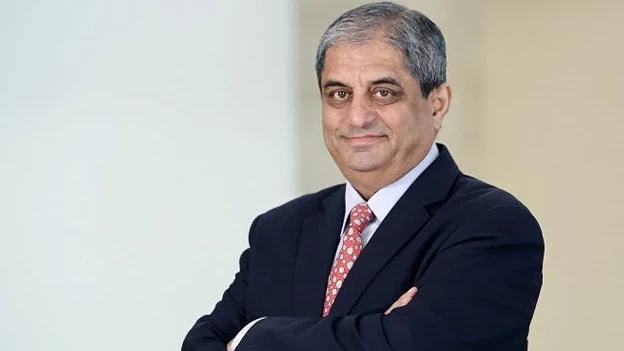HDFC Bank to grow with Puri's template in place
For new CEO Sashidhar Jagdishan, top-end customers will continue to be a priority. But there will be an urgency to move with more force and ammunition to the semiurban and rural areas.
For new CEO Sashidhar Jagdishan, top-end customers will continue to be a priority. But there will be an urgency to move with more force and ammunition to the semiurban and rural areas.

As the sun is about to set on Aditya Puri's 26-year-long innings, HDFC Bank is preparing to push for growth in the post-Covid world under a new chief executive.
Sashidar Jagdishan, who replaces Puri on 27 October, is in a hurry to expand branches in semiurban and rural areas, grow the bank's customer base, fight to gain market share in both advances and deposits and keep vigil over the asset quality. The plan is to ride on the economic revival that the new management expects would set in later into the financial year.
Puri's shadow, however, will remain. "After the Covid crisis, if he (Jagdishan) wants to meet anyone, I have promised to go with him," Puri told analysts in what would be his last earnings call.
Top-end customers will continue to be a priority while spreading out to new market segments. This is where probably Puri wants to extend a helping hand initially so as to preserve the continuity.
Jagdishan realises the importance of this market segment to HDFC Bank. "Since we have been patronising the top end of the customers in each of the sectors, we have been able to navigate through this adversity," he told analysts.
The business model of HDFC Bank, chalked out by Puri, is going to stay as it has worked for the largest private sector lender. Jagdishan calls HDFC as India's "largest working capital bank" and as "a large cash management company". Managing growth, providing short-term credit, and capturing the top-end customers on all segments have been the cornerstone of Puri's strategy. Building a retail portfolio and being particularly aggressive on vehicle loans were also part of the growth plan. It was only in the last few years when HDFC went aggressive on project loans, a majority of which were refinance opportunities.
The bank reported an incremental credit growth of Rs 35,036 crore at the end of the fiscal second quarter. It added 3.17 lakh credit cards to its book, taking the total cards in circulation to 14.80 lakh cards
There is now an urgency to move with more force and ammunition to the semiurban and rural areas, which are expected to lead the charge for the country's economic and corporate recovery after the coronavirus has led to job losses and millions of migrant workers abandoning the cities.
Rural incomes are expected to rise on the back of a good crop season and government stimulus. The green shoots are visible in the rural economy, though it is not clear yet whether this will sustain and for how long. The tractor and two-wheeler sales are picking up. The bankable middle-class could see an increase from these geographies, which HDFC is keen to tap.
HDFC is in the process of identifying 100 branches to be opened by the end of the financial year. In the first half of this fiscal, 176 branches were added. Now half of the bank's branches are in semiurban and rural areas while the other half is in the metros and top cities.
In 2017, the bank had raised Rs 24,800 crore to fund its expansion plan, one-third of which came from its parent HDFC Ltd.
Ducking the Covid impact, HDFC is getting ready to capitalise the moment the economy recovers so that it doesn't have to restart the process again. The staff count is on the rise. The bank added 1,000 employees in the second quarter and 5,874 employees in the last one year. It has a head count of 1,17,082 employees.
"It is not as if we do not have pain, but it is much more manageable than what we had expected," said Jagdishan.
The worry on non-performing assets (NPAs), particularly after the outbreak of the coronavirus, runs across all banks. The bank's chief financial officer Srinivasan Vaidyanath went to Puri and said, "Boss, NPAs will fluctuate like hell and then people will say that Mr Puri went away and the NPAs have started coming ."
"It takes guts for this guy (Srinivasan Vaidyanathan) to come to me and say all this. Then he asked me if I mind creating pro forma NPAs and provisions. So they actually created pro forma NPAs," Puri told analysts.
Despite a steady asset quality with just Rs 11,214 crore of gross NPAs, the lowest in the banking sector, the bank went ultra-cautious to create pro forma NPAs and did provisioning to see if there are fluctuations which would impact its books. The pro forma NPAs took its gross NPAs up to 1.37%, which was at the same level as the year-ago period.
"HDFC Bank's solid performance in the fiscal second quarter beats our expectations. Performance was buoyed by lower credit cost, rebound in fee income and higher investment profit. What really encourages is the management's resilient narrative," ICICI Securities said in a research report.
The positives, according to ICICI Securities, are pro forma gross non-performing assets staying at 1.37%; demand resolution for moratorium-retail portfolio at 97% in October (compared to 99% pre-Covid levels) and that for non-moratorium retail portfolio at 99%; 30dps plus identified stress in SME (small and medium-sized enterprises) portfolio down to 3%, from earlier estimated 9%.
ICICI Securities is also positive about the bank's credit reserves of ~75bps, growth potential from digital initiatives, franchise strength and sharp focus.
"There is a wave of optimism out there. Our strategy is very clear, our market is there and so is our technology," Puri said.
It looks like HDFC Bank will grow with Puri's template in place
